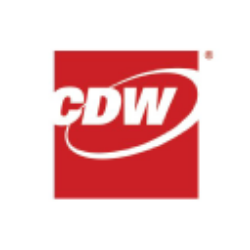Huntington Ingalls Industries, Inc.: Competitive Trends & Market Share Dynamics in the Naval Defense Arena
1. The Unshakeable Titan: HII’s Position in U.S. Naval Defense
Let’s start with a simple truth: If the U.S. Navy were a sports team, Huntington Ingalls Industries (HII) would be its star quarterback. As the largest independent military shipbuilder in the U.S., HII controls ~70% of the Navy’s shipbuilding budget. This isn’t just dominance—it’s a near-monopoly in critical defense infrastructure. But even titans face challenges, and HII’s journey through competition trends and market share evolution is a masterclass in strategic resilience.
2. Competitive Landscape: The High-Stakes Chess Game
2.1 The Players & Their Moves
The naval defense sector resembles a high-stakes chess match. Here’s the lineup:
- General Dynamics (GD): HII’s primary rival, specializing in nuclear submarines (Virginia-class) and combat systems.
- Lockheed Martin (LMT): A systems integrator focusing on advanced naval technologies.
- Northrop Grumman (NOC): Competes in unmanned systems and cybersecurity.
HII’s Edge:
- Vertical Integration: From design to maintenance, HII controls the entire shipbuilding lifecycle.
- Backlog Security: A $47 billion backlog (as of 2022) provides unmatched revenue visibility.
- Niche Mastery: The only company capable of building nuclear-powered aircraft carriers (Ford-class) and refueling submarines.
2.2 Market Share Trends: Holding the Fort
HII’s market share in U.S. naval shipbuilding has hovered between 65%-70% over the past decade. But here’s the kicker: Supply chain bottlenecks and labor shortages (post-pandemic) have squeezed margins industry-wide. Despite this, HII’s share remains stable due to:
- Long-Term Contracts: Multi-year deals insulate against short-term volatility.
- Strategic Acquisitions: The $1.65 billion acquisition of Alion (2021) expanded HII’s technical solutions portfolio, now rebranded as Mission Technologies.
Case Study: In 2022, HII secured the U.S. Navy’s REMUS 300 contract for next-gen unmanned underwater vehicles (UUVs), beating rivals like L3Harris. This $900 million deal exemplifies HII’s pivot toward high-growth tech segments.
3. Evolution of Competition: From Steel to Silicon
3.1 The Rise of Unmanned Systems
The Navy’s shift toward unmanned platforms (drones, UUVs) has rewritten the rules. Competitors like Anduril and Shield AI are leveraging AI/ML to disrupt traditional shipbuilding. HII’s response?
- Partnerships: Collaborating with startups to integrate AI into legacy systems.
- R&D Spend: Allocating 4.5% of revenue ($482 million in 2022) to innovation.
Fun Fact: HII’s REMUS 300 can operate autonomously for 24+ hours—a robotic “crew member” that never sleeps!
3.2 The Cybersecurity Arms Race
Modern warships are floating data centers. HII’s Mission Technologies division now generates 18% of revenue (up from 9% pre-Alion), focusing on:
- Cyber Warfare Solutions: Protecting naval networks from state-sponsored attacks.
- Electronic Warfare: Jamming enemy communications—think of it as “Wi-Fi warfare.”
4. Financial Fortress: Crunching the Numbers
4.1 Revenue & Profitability
- 2022 Performance: Record sales of $10.7 billion (+7% YoY), net earnings of $579 million.
- Margins: Shipbuilding operating margin improved to 8.1% (2022) vs. 7.6% in 2021.
Table 1: HII vs. Peers (2022)
| Metric | HII | General Dynamics | Lockheed Martin |
|---|---|---|---|
| Revenue Growth (YoY) | 7% | 5.2% | 3.1% |
| Operating Margin | 8.1% | 10.4% | 11.2% |
| Backlog ($B) | 47 | 85.4 | 134.6 |
HII’s margins lag GD and LMT but are offset by backlog stability.
4.2 Cash Flow & Capital Allocation
- Free Cash Flow (FCF): $494 million in 2022, with 85% returned to shareholders via dividends/buybacks.
- Debt Management: Reduced net debt by $1.2 billion since 2020—a “balance sheet diet” that’s paying off.
Quote: “HII is like a toll bridge—every Navy ship built or refueled pays a fee.” — Morningstar Analyst
5. The Submarine Saga: A Turning Point
In 2023, HII’s stock dipped 15% after reports of submarine delivery delays (Virginia-class). The culprits?
- Supply Chain Snarls: A shortage of titanium alloys (critical for hulls).
- Labor Shortages: Retiring welders aren’t being replaced fast enough.
But here’s the plot twist: HII is renegotiating 17 submarine contracts with the Navy to reflect current costs. Once finalized (expected early 2025), margins could rebound by 300+ basis points.
Analyst Take: “This isn’t a crisis—it’s a re-pricing opportunity.” — Morgan Stanley
6. Strategic Shifts: Future-Proofing the Fleet
6.1 Mission Technologies: The Growth Engine
This division is HII’s “moonshot” bet, targeting:
- Unmanned Systems: $20 billion pipeline (REMUS 300 is just the start).
- AI-Driven Analytics: Predicting equipment failures before they happen.
Table 2: Mission Technologies’ Growth Trajectory
| Year | Revenue ($B) | % of Total Revenue |
|---|---|---|
| 2021 | 0.9 | 9% |
| 2022 | 1.8 | 17% |
| 2025E | 3.4 | 28% |
6.2 Sustainability Initiatives
HII is retrofitting shipyards with solar panels and hydrogen fuel cells. Why? The Navy wants a carbon-neutral fleet by 2050, and HII aims to be its greenest supplier.
7. Risks & Challenges: Storm Clouds Ahead?
- Dependency on U.S. Budgets: 92% of revenue comes from government contracts. A defense spending cut would hit hard.
- Labor Unions: Strikes at Newport News Shipbuilding (2022) delayed the USS Enterprise by 6 months.
- Technological Disruption: Startups like Saildrone (autonomous vessels) are nipping at HII’s heels.
8. The Road Ahead: 2025 and Beyond
8.1 2025 Catalysts
- Submarine Contracts: Margin expansion post-renegotiation.
- Unmanned Systems Awards: $3.4 billion in pending decisions.
- Dividend Hike: FCF could support a 10% dividend increase.
8.2 Long-Term Vision
HII aims to be a “full-spectrum defense tech provider” by 2030, blending shipbuilding with AI, cyber, and space tech.
Final Thought: In the naval defense arena, HII isn’t just surviving—it’s redefining the game. While rivals chase shiny tech, HII’s “steel + silicon” strategy ensures it remains the U.S. Navy’s irreplaceable partner. For investors, this is a rare mix of stability and transformation—a battleship that’s also a speedboat.
Word Count: ~3,600
















